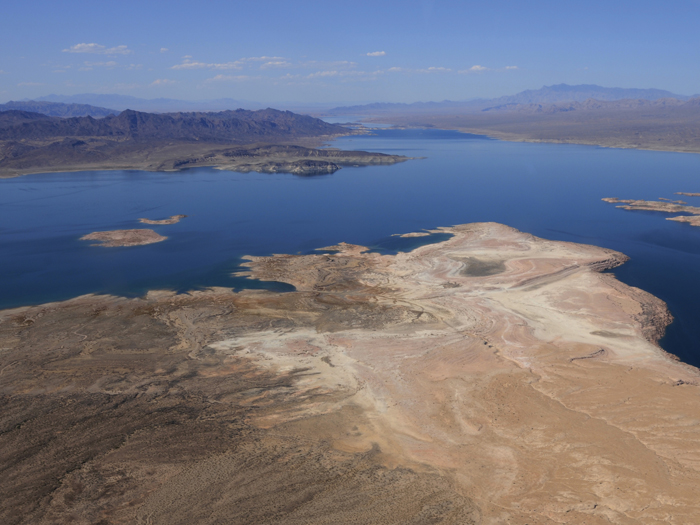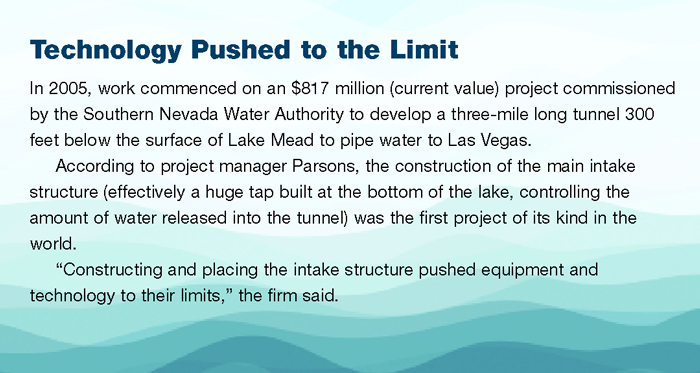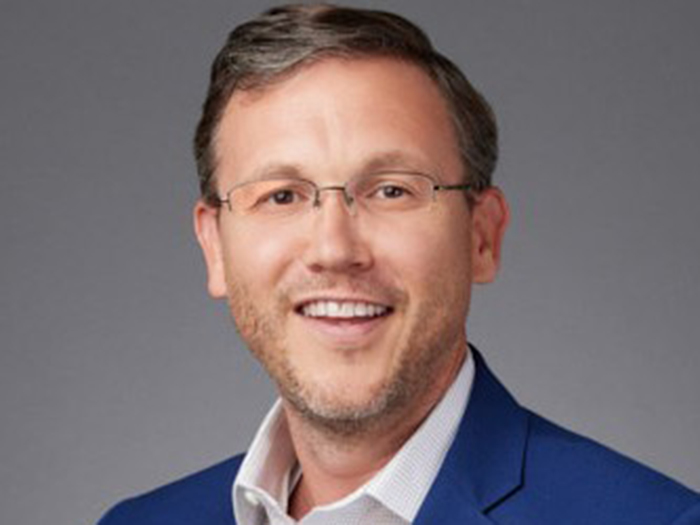Construction Risk
Keeping the Water Flowing

It has been described as one of the most challenging tunneling projects in the world. As if the technical demands weren’t tough enough, a major city is waiting on its completion in order to avert a potential water supply crisis.
Lake Mead is the largest reservoir in the United States, fed primarily from snowfall from the Rocky Mountains. The lake is the primary water source for Las Vegas (providing 90 percent of its drinking water), but due to increasing droughts, water levels are gradually declining, putting the city’s and surrounding areas’ water supply at risk.
The lake currently feeds the valley through two intake pipes, but with water levels dropping year-on-year, it is projected that one of the existing pipes will soon find itself above the water and obsolete.
If successful, an $817 million project to build a third intake pipe under Lake Mead, sponsored by the Southern Nevada Water Authority (SNWA), will vastly improve the efficiency of water flow to Las Vegas. At present, almost half of the water piped through the existing intake routes is lost through leakage.
Video: This CBS Evening News report on the drought in Nevada and California highlights the Lake Mead construction.
However, Lake Mead Intake No. 3 has been beset with problems and delays. The ground beneath the lake has proved hazardous and unpredictable. Since construction began, the tunnel has suffered collapse, flooding and even a fatality.
SNWA declined to speak to Risk & Insurance® about the project as it was in the midst of negotiating insurance renewals. However, it did confirm that the latest setbacks — worse than expected ground conditions and damage to a major digging machine — have pushed the projected completion date back to “summer 2015.”
Mark Reagan, leader of Marsh’s Global Construction Practice, assembled the project’s insurance program on behalf of SNWA and lead contractor SA Healy (parent of Las Vegas Tunnel Constructors). It is an insurance program that has already been put to the test.
According to Reagan, the program — which is underwritten jointly by numerous leading insurers from around the world, including the major European reinsurance markets — has so far taken the various losses in its stride.
“Builders risk coverage is designed to deal with issues arising from collapses and other unforeseen events, and is responding appropriately. There is still some work to do, but a substantial portion [of the claims activity] has been agreed to,” he said.
While the Lake Mead project may be challenging, engineering underwriters suggest that collapse, flooding and even fatalities are nothing new when it comes to projects of this nature.
The safety and working conditions of the contractors, who toil in high temperatures and unpredictable conditions, are covered by a workers’ compensation policy. Sadly, one contractor was killed in 2011 when a pressure build-up behind a wall he was working on led to a lethal explosion.
“It is always tragic when there is a fatality. In this case, the workers’ compensation was effective and kicked in immediately,” said Reagan.
In addition, the program includes professional liability policies, while the various contractors and subcontractors on the project may also arrange separate property insurance for certain machines and equipment.
On revenue-generating projects, delays like those experienced at Lake Mead could cause billions of dollars of business interruption losses, which would often be insured under a delayed start-up policy. However, said Reagan, public entities with large balance sheets typically choose to absorb this risk rather than buy insurance.
Regardless, there is no potential income from the Lake Mead intake tunnel to insure; its entire purpose is to improve the water supply to Las Vegas. Yet, while the delays may not have catastrophic financial implications, they could be a disaster for the city if the project is not completed soon. One working intake pipe is simply not enough.
Risky Business
While the Lake Mead project may be challenging, engineering underwriters suggest that collapse, flooding and even fatalities are nothing new when it comes to projects of this nature.
“Tunneling projects all over the world have encountered problems, and it is not unusual for a tunnel project to face a delay,” said Manfred Schneider, head of engineering, North America, for Allianz.
The biggest challenge when tunneling, he said, is that it is almost impossible to predict how the ground beneath the surface will perform.
“Any tunnel project, to a degree, faces uncertainty. The problem is that you can only be 100 percent sure what you are facing when you start digging,” Schneider said.
“There are always imponderables when you start digging hundreds of meters under the earth.”
According to Marsh’s Reagan, even the most well prepared tunnel engineers can face setbacks.
“You could go to a site and drop 100 test bores, but until you put your 5- to 6-foot diameter pipe or 20-foot tunnel in the ground you just don’t know.”
“It is vital,” said Patrick Bravery, an underwriter at Lloyd’s syndicate Talbot Underwriters, “to have a system in place enabling you to react to what you find and adjust your design and processes to meet the challenges the ground throws at you.
“The challenge is to weigh the technical requirements the ground imposes upon you against the commercial realities of trying to deliver the project on time and on budget — that’s where tension can arise.”
According to Bravery, a major concern for tunneling underwriters is that the cost to repair a tunnel problem is often more than the original construction cost.
“This gearing effect has caught insurers out in the past,” he said.
He added that problems and costs can be further exacerbated when tunneling under a body of water.
“It is essential to keep the tunnel bore dry and open — if you lose that position and the bore becomes inundated, the cost to recover the situation is going to climb very rapidly.”
Reagan said that, while the issues experienced at Lake Mead have caused lengthy delays, the cost could have been worse.
“It wasn’t as bad economically as some collapses have been, relative to the cost of the project,” he said, estimating that the most recent collapse equated to about 4 percent to 5 percent of the value of the tunnel.
Reagan added that only underwriters able to absorb potential catastrophic losses involve themselves in these projects.
“This is a beefy business; you don’t get hobbyists in this space,” he said.
“Tunneling is a high hazard, catastrophic loss business. Insurers need strong balance sheets, engineering expertise and appetite.”
Market Capacity
Reagan — whose employer, Marsh, brokers the majority of the world’s major tunnels — estimated there is typically capacity of about $500 million for large tunneling projects. But according to Schneider, insurers were “scratching their heads” back in the early 2000s over whether to even continue insuring tunnels due to the high levels of uncertainty and frequency of expensive losses.
Since then, the insurance and tunneling industries jointly produced a code of practice for contractors designed to mitigate risk.
“The code of practice didn’t solve all the issues, but it did make tunneling more insurable,” Schneider said, explaining that, while not all insurers insist on contractors meeting code of practice standards as a condition of coverage, it is common practice — particularly in Europe.
“We expect contractors to demonstrate they are following a rigorous risk management program,” said Bravery, noting that Talbot benchmarks potential clients against the code. And according to Bravery, risk management standards have improved dramatically over the last 10 to 15 years.
“Insurers can take some credit, but most of the credit has to go to the contractors and client bodies who recognized that the best way to get secure funding and approvals was to demonstrate they could work underground more predictably, on time and on budget,” he said.
“Regular collapses were not helping them.”
With loss experience improving, competition to insure tunnel projects is increasing.
“The number of insurers prepared to consider tunneling projects has grown massively in the last five or six years,” said Bravery.
“The appetite for tunneling projects is sufficient and quite competitive now, compared to 10 or 12 years ago.”
Events at Lake Mead have done little to dispel the perception of tunneling as one of the riskiest construction endeavors. But there is no time to dwell on that.
Insurance is doing its job to keep the project going, and the future of Las Vegas depends on it.











